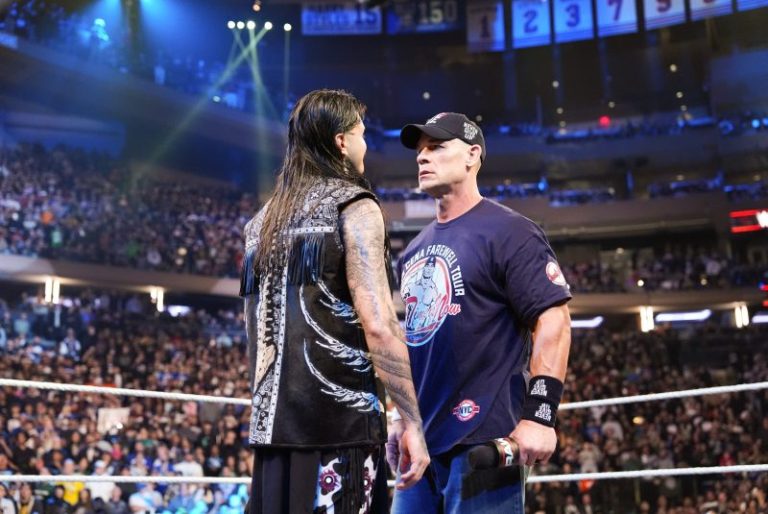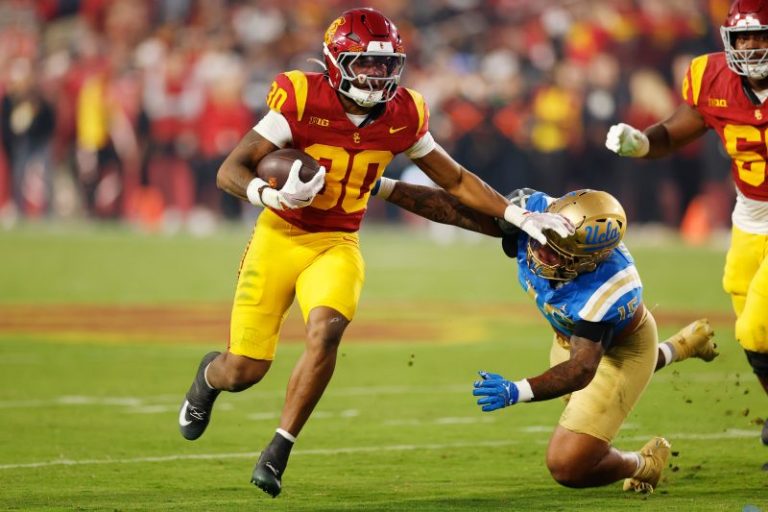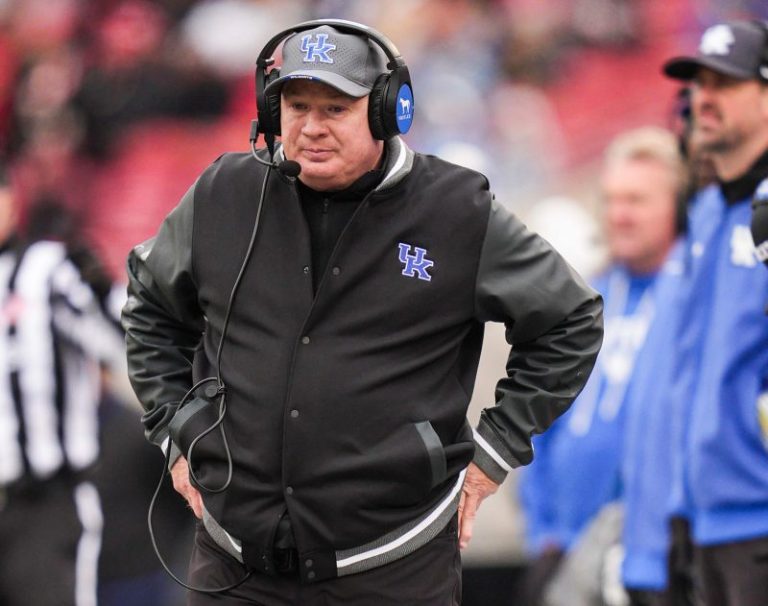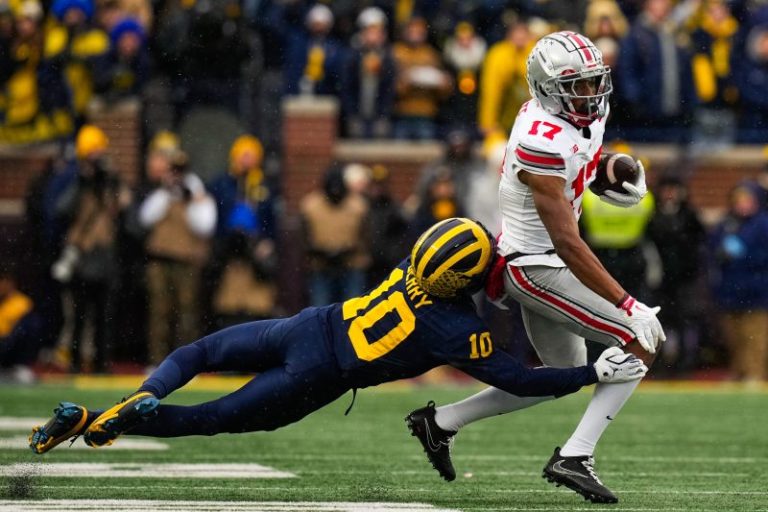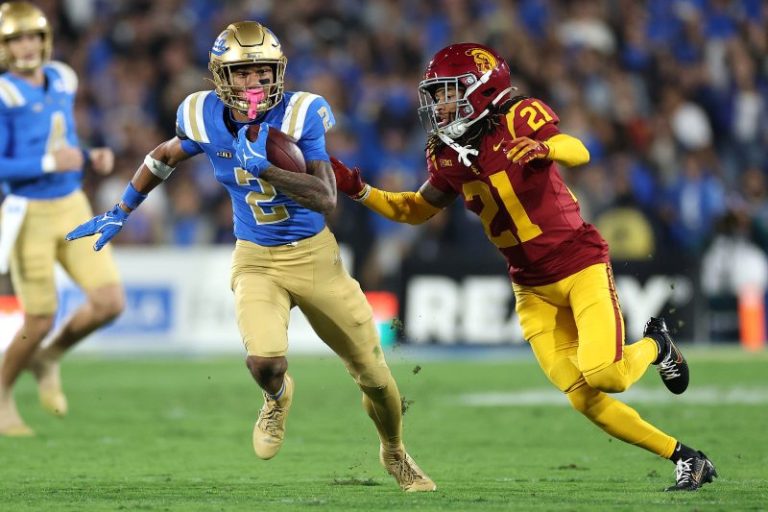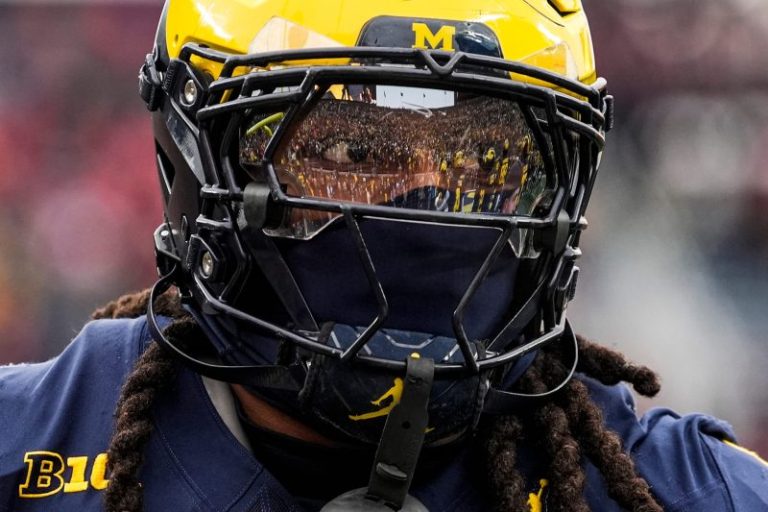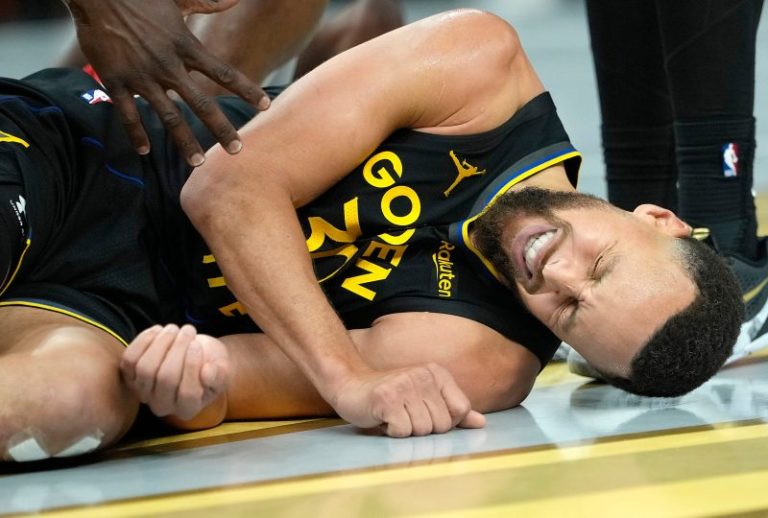War has arrived in WWE.
An iconic WWE premium live event, Survivor Series is back, and so is the match stipulation that is becoming synonymous with it: WarGames. A match that involves two rings surrounded by a steel cage, the men’s and women’s fights feature heated rivalries that are bound to result in carnage.
That won’t be all taking place, as John Cena has the penultimate wrestling match of his career, defending his Intercontinental Championship. There’s also the Women’s World Championship on the line in what’s promising to be a fun night of wrestling in San Diego.
Follow USA TODAY Sports for all the highlights and analysis for Survivor Series 2025:
Stephanie Vaquer vs. Nikki Bella is underway
Stephanie Vaquer has entered the ring to take on Nikki Bella for the WWE Women’s World Championship.
Dominik Mysterio defends John Cena
Dominik Mysterio reclaimed the WWE Intercontinental Championship and defeated John Cena in San Diego, with the help of Liv Morgan, who returned to the ring for the first time since suffering a shoulder injury in June.
John Cena vs. Dominik Mysterio
Dominik Mysterio and John Cena enter the ring for the second match of the night, which will be for the WWE Intercontinental Championship. Despite San Diego being Mysterio’s hometown, the crowd was heard chanting ‘Thank you, Cena.’
Women’s WarGames results
Rhea Ripley, Iyo Sky, Alexa Bliss, Charlotte Flair, and AJ Lee were too much for Nia Jax, Lash Legend, Kairi Sane, Asuka, and Becky Lynch, leading to their victory.
Nia Jax storms into the ring
Nia Jax made her entrance, immediately establishing her dominance as the momentum shifted in her favor against her opponents. Rhea Ripley and Lash Legend followed her into the ring, with Ripley wearing a mask resembling the ‘Terrifier’ character due to a broken nose she sustained in a match last month.
AJ Lee makes her way into WarGames
Despite Becky Lynch attempting to keep AJ Lee out of the ring, Lee climbs the fence and drops bodies before going one-on-one with Lynch. This is Lee’s first-ever WarGames showdown.
Becky Lynch has entered the ring
Becky Lynch, the fourth of ten competitors, has entered the ring.
Charlotte Flair honors fan
Charlotte Flair’s outfit for the WarGames event is inspired by a 7-year-old fan named Scarlett, who is battling a brain tumor.
Women’s WarGames has begun
The Women’s WarGame matches have begun, featuring Rhea Ripley, Iyo Sky, Alexa Bliss, Charlotte Flair, and AJ Lee against Nia Jax, Lash Legend, Kairi Sane, Asuka, and Becky Lynch.
Watch: Survivor Series 2025 preshow
When is WWE Survivor Series: WarGames 2025?
Survivor Series 2025 is on Saturday, Nov. 29.
WWE Survivor Series: WarGames start time 2025
Survivor Series: WarGames begins at 7 p.m. ET/4 p.m. PT. The preshow begins at 5 p.m. ET/2 p.m. PT.
Where is WWE Survivor Series: WarGames 2025?
Survivor Series 2025 takes place at Petco Park in San Diego, California. Home of the San Diego Padres, it’s the first Survivor Series to be held outdoors.
Stream Crown Jewel on ESPN
How to watch WWE Survivor Series: WarGames 2025
The event will stream on ESPN’s streaming service. Viewers can sign up for a subscription to the site here, which starts at $29.99 a month.
ESPN’s service is available through select cable and TV packages, including:
DIRECTV
Fubo TV
Hulu + Live TV
Spectrum
Verizon FiOS
If your cable or TV package includes ESPN streaming service, you can figure out how to activate it here. The event will also be shown at select movie theaters nationwide.
Internationally, Survivor Series: WarGames will be available on Netflix in most markets.
WWE Survivor Series: WarGames 2025 preshow: how to watch
The Survivor Series: WarGames 2025 preshow will be available to watch on ESPN, as well as WWE social platforms like YouTube and TikTok.
WWE Survivor Series: WarGames 2025 match card
Matches not in order
Men’s WarGames match: Cody Rhodes, CM Punk, Roman Reigns, Jey Uso and Jimmy Uso vs. Bron Breakker, Bronson Reed, Brock Lesnar, Logan Paul and Drew McIntyre
Women’s WarGames match: Rhea Ripley, Iyo Sky, Alexa Bliss, Charlotte Flair and AJ Lee vs. Asuka, Kairi Sane, Nia Jax, Lash Legend and Becky Lynch
Women’s World Championship match: Stephanie Vaquer (c) vs. Nikki Bella
Intercontinental Championship match: John Cena (c) vs. Dominik Mysterio
Survivor Series: WarGames 2025 predictions
USA TODAY Sports’ wrestling experts give their predictions for what will happen at Survivor Series. See the full picks here.
Men’s WarGames match: Cody Rhodes, CM Punk, Roman Reigns, Jey Uso and Jimmy Uso vs. Bron Breakker, Bronson Reed, Brock Lesnar, Logan Paul and Drew McIntyre
Jordan Mendoza: Bron Breakker, Bronson Reed, Brock Lesnar, Logan Paul and Drew McIntyre
Richard Morin: Bron Breakker, Bronson Reed, Brock Lesnar, Logan Paul and Drew McIntyre
Women’s WarGames match: Rhea Ripley, Iyo Sky, Alexa Bliss, Charlotte Flair and AJ Lee vs. Asuka, Kairi Sane, Nia Jax, Lash Legend and Becky Lynch
Jordan Mendoza: Rhea Ripley, Iyo Sky, Alexa Bliss, Charlotte Flair and AJ Lee
Richard Morin: Rhea Ripley, Iyo Sky, Alexa Bliss, Charlotte Flair and AJ Lee
Women’s World Championship match: Stephanie Vaquer (c) vs. Nikki Bella
Jordan Mendoza: Stephanie Vaquer
Richard Morin: Nikki Bella
Intercontinental Championship match: John Cena (c) vs. Dominik Mysterio
Jordan Mendoza: Dominik Mysterio
Richard Morin: Dominik Mysterio
What are WarGames?
Created by WWE Hall of Famer Dusty Rhodes in 1987, WarGames is one of the most unique matches in WWE, and has become a staple in the company since its introduction into NXT in 2017. It involves two rings side-by-side, which are surrounded by a roofless steel cage. The match is contested by two or three teams.
The match begins with one competitor from each team starting in the ring. After five minutes, another competitor from one team enters the match to give a brief 2-on-1 advantage. Two minutes afterward, a competitor from the disadvantaged team enters to even the odds. Teams then alternate entrants until all competitors are in the match.
A team wins by pinning or submitting any member of the other team.
Survivor Series history
Survivor Series is the second-longest running pay-per-view in WWE behind WrestleMania. The event first took place in 1987 at the Richfield Coliseum in Richfield, Ohio.
While most premium live events typically have a championship match as the main event, Survivor Series has been known for having tag team matches as the headliner. Often five-on-five elimination tag team matches, there have been matches that include stars forming teams or brand matchups like Raw vs. SmackDown.
Survivor Series started using the WarGames matches in 2022 after it was first used in NXT. This year’s event will mark the seventh and eight WarGames matches to take place in Survivor Series history.
John Cena farewell tour reaching end
Time is almost up for Cena as his 2025 farewell tour is in its final month. In his last year of in-ring competition, Cena has won the Elimination Chamber and the Undisputed WWE Championship, becoming the first 17-time title holder in WWE history. He also is the Intercontinental Champion, making him a Grand Slam champion.
His career will come to a close on December 13.
When is John Cena’s last match?
His final match will be at Saturday Night’s Main Event on Dec. 13.
Survivor Series 2025 will mark Cena’s 35th appearance of 2025, and with 36 promised in his final year of wrestling, this is his second-to-last match of his career.
Who is John Cena’s final opponent?
It is still be determined. Cena’s final opponent will come from the winner of the 16-man ‘Last Time is Now’ tournament. There are currently six stars left in the bracket:
Quarterfinals
Rusev vs. Jey Uso
LA Knight vs. TBD (Sheamus out due to injury)
Gunther def. Carmelo Hayes
Solo Sikoa def. Penta
Semifinals
Gunther vs. Solo Sikoa
TBD vs. TBD
Final
TBD vs. TBD
See the full bracket here.

